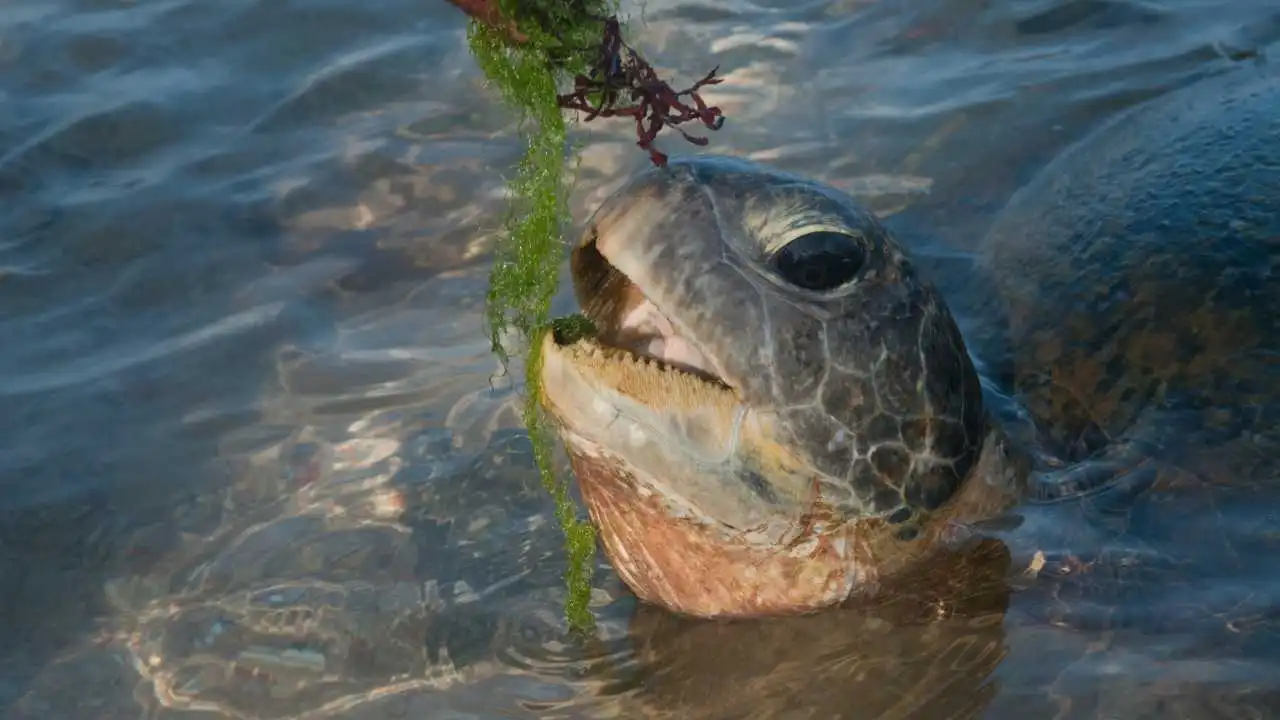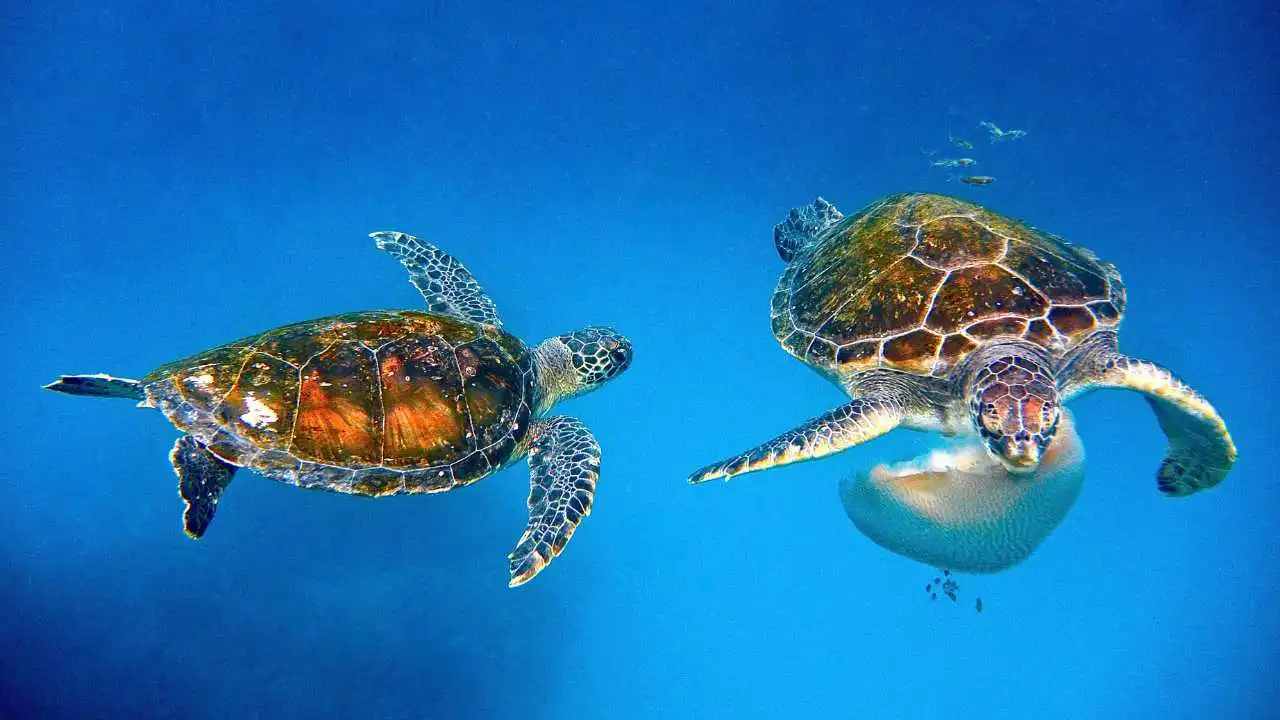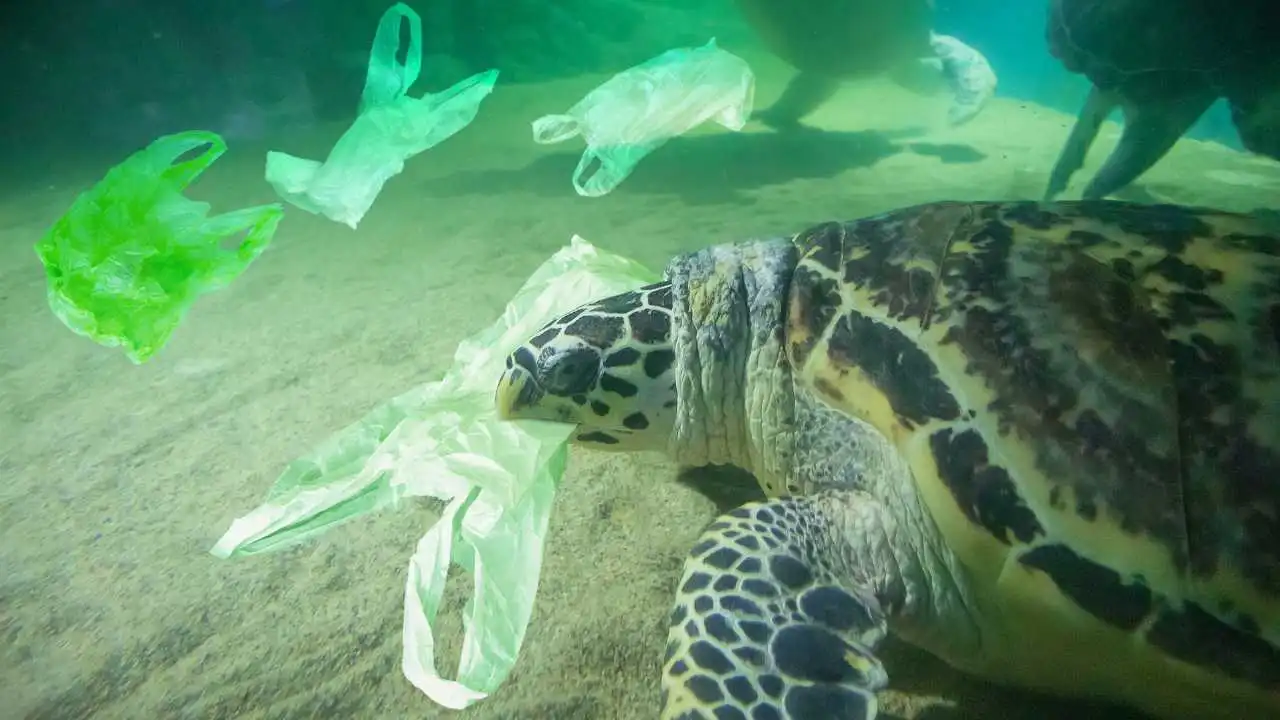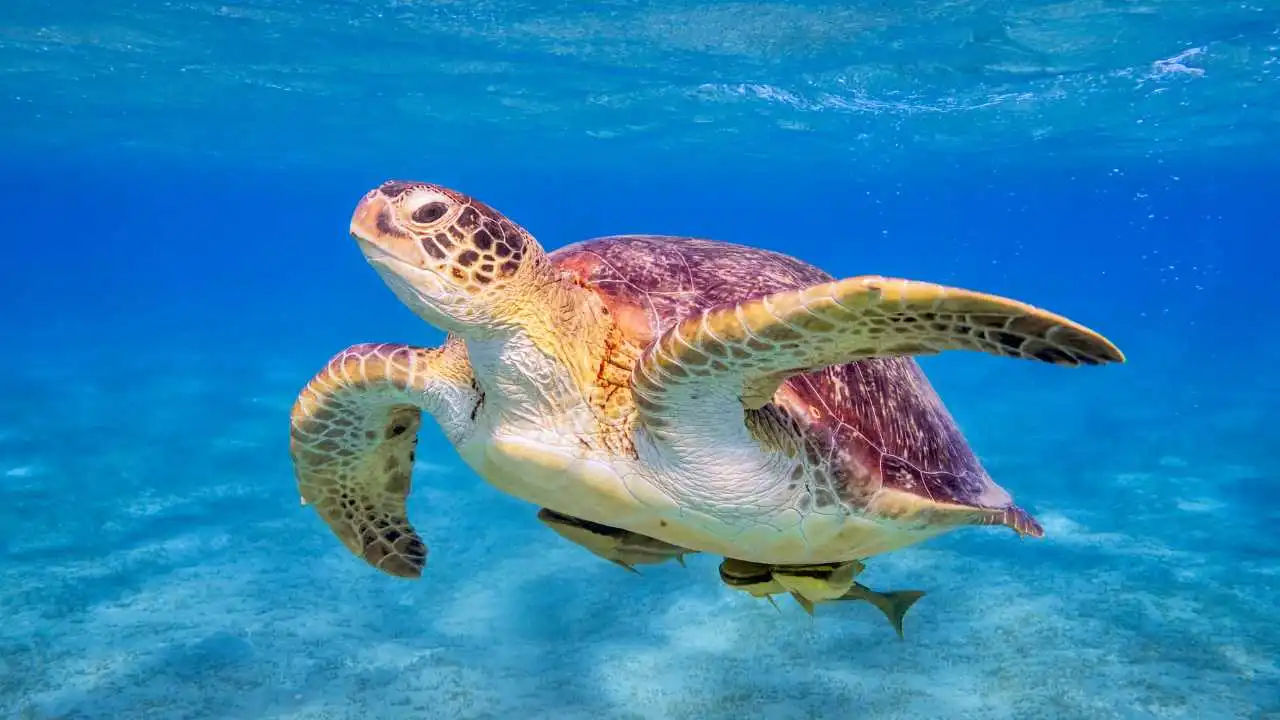Sea turtles are some of the most iconic creatures in the ocean, and they play a vital role in marine ecosystems. They help to keep coral reefs healthy by grazing on sea grasses and algae, while their eggs provide food for many other species. Sea turtles also serve as an important indicator of ocean health since they are sensitive to changes in water temperature or pollution levels. Their population numbers have been declining over time due to human activities such as fishing nets, plastic pollution, coastal development and climate change.
What Do Sea Turtles Eat

The diet of sea turtles is very diverse in the sense that some are herbivores, some are carnivores, and some are omnivores. They consume food derived from both plant and animal sources. A sea turtle’s precise diet also differs regarding its environment and the availability of food sources there.
Let us have a look at what sea turtles eat.
- Algae
- Seagrasses
- Seaweed
- Tunicates
- Sea squirts
- Crabs
- Conchs
- Whelks
- Sponges
- Shrimp
- Lobster
- Sea urchins
- Jellies
- Fish
- Mollusks
How do sea turtles get their food?
Sea turtles catch their prey and then swallow it or rip it apart, according to its size. They have specialized jaws that help them crush their food easily. This helps them to consume hard-shelled prey such as mollusks or crabs. In addition, they have an adaptation called a hyoid apparatus, which helps them in swallowing food. Different types of sea turtles might have different diets depending on their size and species.
How much food do sea turtles eat?
The dietary needs of sea turtles can vary depending upon the type, size and species. For a general idea, adult green sea turtles consume about 2-3% of their body weight. Young turtles would consume a little more to fulfill their dietary needs. Furthermore, an hawksbill adult turtle can eat 544 kg (1,200 lbs.) of sponges per year. It is also worth noting that the availability or non-availability of food in their respective habitats can affect their diet.
What is a sea turtle’s favourite food?

The favourite food of sea turtles is Jellyfish. With specialized throat structures and jaws, sea turtles are adapted to eat these gelatinous animals. Sea turtles consume jellyfish largely despite the poor nutrition values they yield. It may be due to their abundance or dietary efficiency. Jellyfish are also the most well-known food of sea turtles and it is also believed that jellyfish are their only diet.
How do sea turtles eat?
Sea turtles do not possess teeth, instead, they have beaks made up of Keratin which helps them adapt their diet. Sea turtles use their unique jaws to eat. The Green sea turtles rip up the seaweeds and algae and bite their prey with their denticulated beaks. The sea turtles like Leatherback have backward-pointing spines along their oesophagus which prevents the escape of slippery food such as jellyfish. These spines fold in their neck and allow them to engulf their food by expelling the excess of water. Their muscular jaws help them to hold onto their food.
Do sea turtles eat meat?
Yes, sea turtles do eat meat. Most of the sea turtles are omnivores like flatbacks and olive ridley who eat meat besides algae and seaweeds. Some sea turtles such as Loggerheads and Leatherbacks are carnivores and primarily feed on jellyfish, crabs, invertebrates, and other marine animals. In a nutshell, animal flesh is a significant part of their diet, alongside other food alternatives.
Do sea turtles eat plastic?

Sometimes sea turtles eat up undesired food like plastic and disposable waste. Apparently, the plastic waste seems like jellyfish or algae to the sea turtles and they consume it unintentionally. According to research, around 52% of the sea turtles eat plastic. This plastic chokes in their throats causing serious health issues and if the plastic is sharp, it can damage their organs or may even be fatal. Sometimes the plastic they ingest carries toxic chemicals that affect them adversely or may defect their ability to reproduce.
Do Sea Turtle Diets Vary Across Species?
Yes, different species of sea turtles possess different diets. The omnivore sea turtles such as flatbacks and olive ridleys, as adults eat a variety of plants and animals in marine life. The green sea turtles are herbivores and live on seaweeds and algae. While the carnivore sea turtles like loggerheads, leatherbacks, and kemp’s ridley consume jellyfish, crabs and many aquatic animals. The olive ridleys are the most abundant species of the sea turtles and have the most diverse diet.
Challenges for Sea Turtle Feeding Patterns
There are many challenges to the feeding patterns of sea turtles. These difficulties may significantly impact their general health and demographics.
- The indiscriminate nature of their feeding habits
- Quality of their food sources.
- Migration
- Ingestion of marine debris
- Urbanization and Development
- Marine pollution
- Oil Spills
- Climate change







Leave a Reply